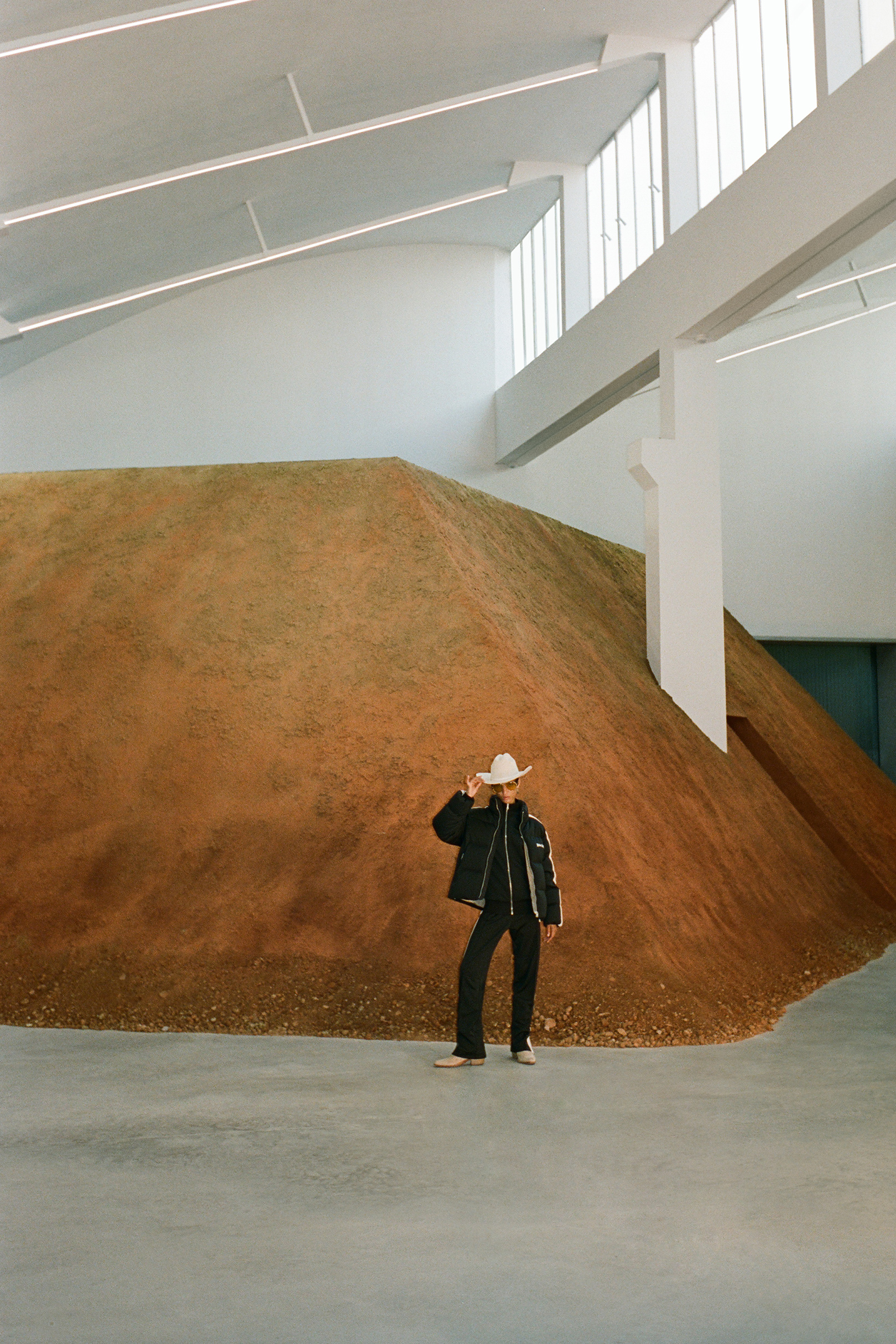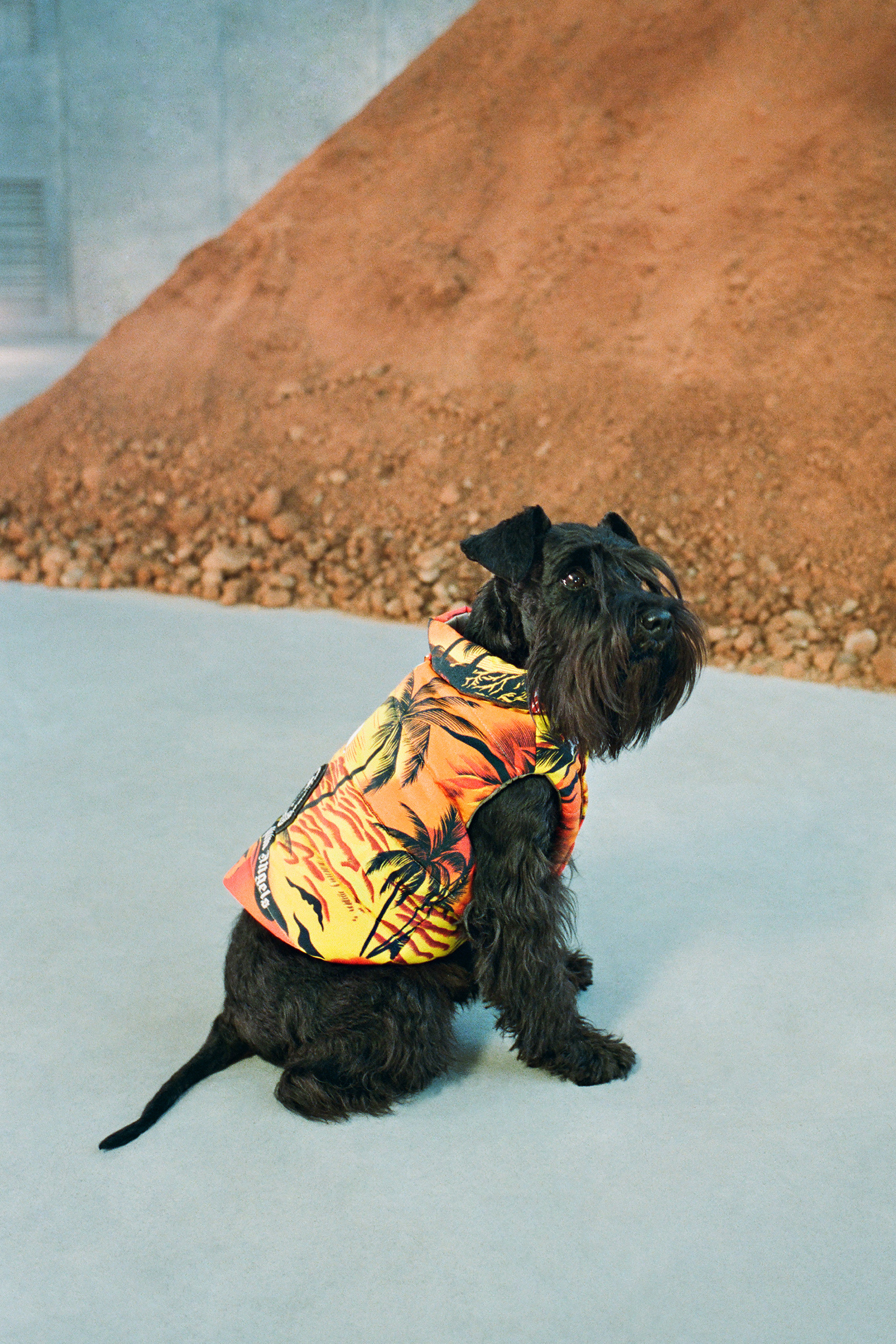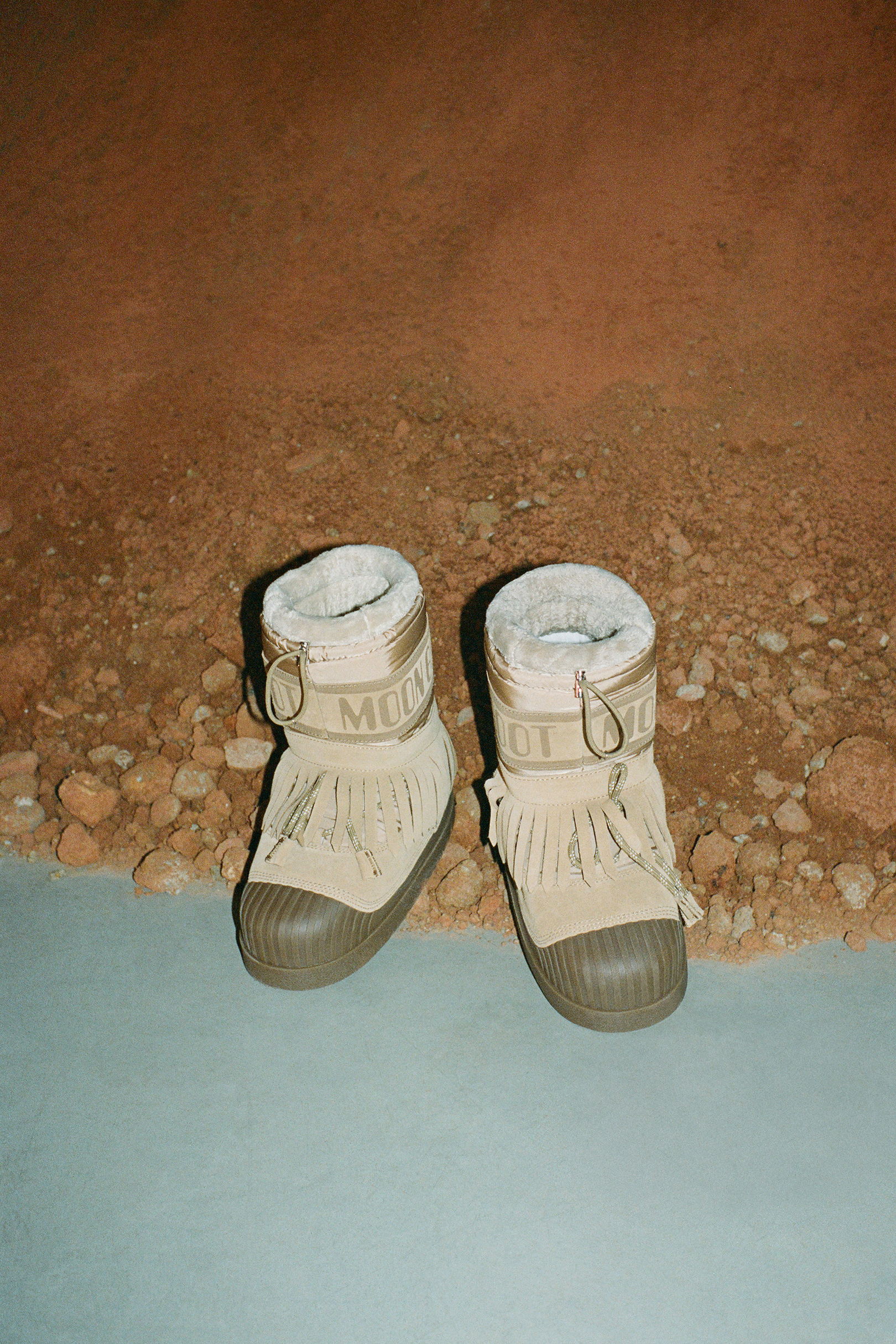fashion!
Inside Francesco Ragazzi’s Wild West-Inspired 8 Moncler Palm Angels Collaboration
When Francesco Ragazzi stumbled upon the impeccably curated Instagram page of Mask, Jack Murphy’s Santa Fe-based vintage store, it was love at first sight. The Palm Angels founder was captivated by Murphy’s curatorial skills, which set classic American vintage pieces against the raw textures, rich hues, and vast expanses of the New Mexican desert. Murphy’s knack for showcasing vintage garments in a new light proved irresistible to Ragazzi, who made a name for himself by blending the seemingly incompatible aesthetics of Milan and Malibu. So, when Moncler tapped the 41-year-old designer to collaborate on a new collection this year, he knew Murphy was the person to help him showcase it. This week, Ragazzi debuted 8 MONCLER PALM ANGELS at The Dune, an exhibition space designed by Murphy, which brings the sunsets of Santa Fe to the bustling metropolis of Milan. With 8 MONCLER PALM ANGELS, Ragazzi presents an array of what he calls “future vintage pieces”— reimagining Moncler classics with a retro flair. On the occasion of the collection’s release, Ragazzi and Murphy spoke by phone about the majesty of the New Mexican desert, the secret lives of vintage clothing, and their favorite moments from the collaboration process.
———
FRANCESCO RAGAZZI: What’s up man?
JACK MURPHY: I’m good. It’s raining right now and it snowed last night, so it’s getting cool over here.
RAGAZZI: Are you going to Miami or not?
MURPHY: I’m still figuring it out. I really do want to come to the event, I have something I’m doing with Matthew [Williams] but it’s not till the 7th, so I’m trying to figure it out.
RAGAZZI: Well, we met because I randomly found your page on Instagram and I loved how everything was laid out in a very simple but clear way. I reached out to you because I was struck by your modernity of vision. You have really vintage American pieces, but almost extracted from their context. With your page, you created a very strong brand for your store. With the Moncler collection, I really wanted to replicate that vision. It’s what vintage is all about—different items all in one place, not really matching. That’s what I like, when things don’t belong with each other.
MURPHY: That taking these clothes and presenting them without context allowed people to focus on the clothing and start to create stories around it. I got my degree in film and I’ve always tried to create stories around things, that’s just kind of how my mind works. When I look at vintage clothing, I wonder who might have made it or who might have worn it. Like you said, combining it with modernity to see where it lands now. I think my Instagram allows people to look at the clothing that I post in a whole new way.
RAGAZZI: I think so. The white background allows the piece to speak by itself–and it’s loud enough to speak. You see the texture. It’s like how museums photograph archival pieces—you have that white space that really gives a space for the object to define itself.
MURPHY: I love that connection to what we did in Milan. I mean this structure in a gallery without any real context is shocking at times.
RAGAZZI: I still have people talking about that space because it was visually striking, I think. Let’s not forget that we brought that sort of culture to Milano, where vintage is not as strong as it is in the West. Before it had never belonged to Milano and it was important for it to belong in this context, in an empty gallery.
MURPHY: It was amazing to see people’s reactions, they were completely unexpected. It was shocking in some ways, which is always fun as an artist.
RAGAZZI: I totally agree. The collaboration process was pretty simple, it was just bringing stuff to Milano— the best possible pieces. I came up with this Dune concept because I thought we needed a common name to present the collection between Moncler, me, and the vintage pieces. It’s almost like I did the exterior and you did the interior, which is a really cool way to collaborate—different aspects but the same output.
MURPHY: I was sort of surprised at how much freedom you entrusted in me to bring what makes Sante Fe so beautiful to Milano. It was a really easy collaboration process.
RAGAZZI: With the pandemic it wasn’t that easy to actually show it to people in real life.
MURPHY: I mean, I didn’t have any reference for working with a brand, especially one with so much history. It was a little intimidating at first, to be honest, because anything was possible—they had the ability to make anything happen. Both teams were just really inspiring in their ability to think big and get things done. There aren’t enough good things I could say about both teams—it was just so much fun.
RAGAZZI: The desert landscape was essential because my inspiration is reinterpreting American culture. Sante Fe is very important for vintage stores. I always say that in vintage stores create a wardrobe or an archive of pieces that are an emblem of American culture. Sports teams, hunting, fishing, the military—all those things mixed together really represent American culture.
MURPHY: New Mexico has a lot of those reference points and cultures that come together. The open landscape here stimulates a lot of creativity and gives people the mental space to imagine the ways in which all these things combine and interact. Historically, a lot of amazing artists have come here, like Dennis Hopper and Georgia O’Keefe. Vintage clothing is all about imagining who might have worn the garments and who actually made them. When I see vintage clothing, I see those stories. When I saw the clothing from Moncler and learned more about Italian manufacturing, there’s such a strong connection with the kind of working culture that America has largely lost, where people could really make a living and dedicate their lives to craftsmanship. You could really see that in the products. When people are well taken care of and are able to build a life around creating, you can see it in the clothing. It has a soul to it.
RAGAZZI: There’s this mystic thing about the clothing you buy in a vintage store, it had a previous life. I personally never want to go deeper into that, but the fact that it’s there, it’s an added value for me.
MURPHY: I was looking at a shirt I had found the other day, it was a Western shirt, and there were wear marks. There were circular dip-can marks on the pocket, the guy loved his chewing tobacco so much that he always had it in his front pocket. Over time, it created its own little imprint. That’s true for a lot of clothing, our lives are embedded in it. That’s fascinating to me.
RAGAZZI: Probably my favorite piece in the collection was the jacket with the yellow shoulder. It really embodies a vintage piece to me. It will age well.
MURPHY: There are two for me. I really love the dog jacket because it would look really great on my puppy.
RAGAZZI: We’ll send that to you!
MURPHY: There’s also a puffer jacket that is this deep, burnt orange color. It reminds me of the sunsets here in Sante Fe. That color is so distinctly ’60s and ;70s– I have a Danish, mid-century modern chair whose original upholstery is the same color. There’s something distinctly vintage about it that I love.
RAGAZZI: I think that you can wear these pieces everywhere. They’re for everyday use, they just need to age a bit and then they will be future vintage pieces.
MURPHY: I agree. I would love to see this collection mixed with vintage. It will make the people wearing it look chic and smart. I can’t wait to see it out in the wild.
RAGAZZI: It will look like a Sante Fe Instagram page!














